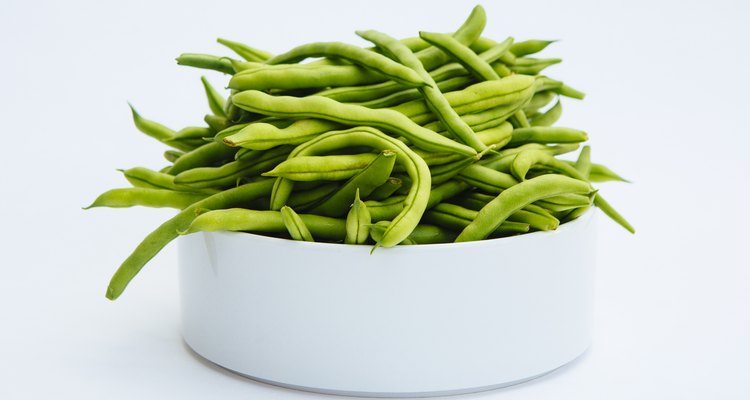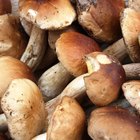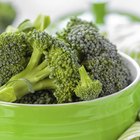
kburgers/iStock/Getty Images
Green beans are an edible pod made from a variety of different plants. They are available year round but have a peak period of summer to fall. When you shop, look for firm, bright beans. This denotes the healthiest and best-tasting ones. These nutrient-rich vegetables can be an important part of your diet.
Appetite
Green beans are a low-calorie food -- a single cup only contains 37 calories -- with 4 g total of dietary fiber. Therefore, they are disproportionately filling and, as a cornerstone of the diet, can prevent overeating, which is one of the biggest reasons why people have trouble losing weight and maintaining a balanced, healthy diet.
Nutrients
Green beans are a significant source of vitamin C, which is needed for the growth and repair of tissue, and iron, a mineral used for red blood cell formation. To a lesser extent, green beans can provide some of the daily recommendations of potassium and complex carbohydrates. However, green beans cannot provide every nutrient and are therefore just one element of a complete diet.
Considerations
Green beans are low in sodium, cholesterol and total fat. However, some fat is absolutely critical in the diet in order to maintain health. According to MayoClinic.com, fat should represent 20 to 35 percent of your total calories. It is better found in foods such as nuts, oils and avocados. Furthermore, green beans only provide 4 percent of daily required protein. It's a good idea to add meat, dairy or legumes to your diet for protein.
Benefits
Because of fiber's ability to control the rate of absorption in the digestive system, green beans can help lower high levels of blood sugar, which can lead to diabetes, and cholesterol, a risk factor in heart disease. Green beans are also a good food choice for people who have already developed these risk factors and conditions. However, fiber may not help with every disease. The evidence that it can reduce colorectal cancer is rather mixed.
Preparations
Green bean is a general term that typically refers to the beans derived from plant species such as the yardlong bean, winged bean and especially the common bean. They can be boiled, steamed, made into a puree and, for the purpose of dietary diversity, mixed with foods such as almonds, bacon, basil, bechamel sauce, butter, cream, garlic, lemon, mint, mushrooms, nutmeg, olive oil, onions, oregano, Parmesan cheese, parsley, rosemary, tomatoes, vinegar, nuts and Worcestershire sauce.
Related Articles

Which Vegetables Produce the Most ...

Zinc & Copper for Aging Skin

Nutritional Facts of Fava Beans

What Is the Nutritional Value of Wheat?

Top Vegetables With Selenium

Porcini Mushroom Nutrition Information

Nutrition Information on Blueberries

Nutritional Value of Dehydrated Green ...

What Foods Provide Calcium D-Glucarate?

A Low-Cholesterol Diet Plan Menu

L-Lysine for Hair Growth

What Are the Benefits of a Green Drink?

Cannellini Beans for Weight Loss

What Is Green Magma?

Can You Change Skin Tone with Food?

Foods Rich in Magnesium & Phosphorus

Food Sources of Betaine

A List of Foods That Contain Choline

B-6, Zinc & Acne

Skin Benefits of Eating Coconut Oil
References
Photo Credits
kburgers/iStock/Getty Images